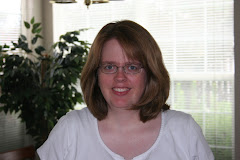First Draft
- Usually done with the right side of the brain (the muse)
- Revisions are done by the left side of the brain (the editor)
The best thing to do is to find ways to trick the editor side into silence until your right brain has finished the first draft. (See section below on Tips & Tricks)
Point of View (POV)
The following are the times that you should make sure to have a clear POV change:
- When there is a change to a different characters POV
- When there is a change in time
- When there is a change in location
There are three times that you should write from a different POV other than the main character:
- When there is another character within the story who has the most to lose
- When you have to convey some piece of info that the hero doesn't know
- When the hero is not in the scene
Note: If you are writing from someone elses POV, try to convey their opinion of the hero.
Before Writing the Scene
Every scene takes place in a setting.
- Find at least five characteristics of the setting that you can communicate at some point in the scene (using the 5 scenses - not all will make it to the scene, but you see it more clearly as the writer if you can personally identify the five scenses).
- What impressions do you want to make about the setting (i.e. dangerous)
- What meaningful actions from the character make the setting an integral part of the story
Tips to Trick the Editor to Allow the Muse to Write
- Write early in the morning
- Eliminate/seperate yourself from distractions
- Write by hand
- Don't stop to edit
- If you make a decision to change something, then write a note to later go back and change anything earlier in the story that may need changing
- Don't stop for research (write a note to remind yourself to research later)
- Relax
- Use unlined paper and a pen that won't slow you down
- Interestingly enough you can get the first draft done in one hour a day in three months time
- at the end of the day of writing, create a scene card (see Mr. Hickman's book for a template) that oulines what happened in the scene
- include scene number
- type (i.e. action, suspense, etc.)
- who's POV
- setting
- who is in the scene
- the conflict
- anything that advances the plot
- information revealed about characters
- identify inconsistencies
- other important information
- any reserach questions
- suspense elements (something that raises a question in the reader's mind)
- include scene number
After you are finished with the first draft, then do the research for the questions that you still need answered. Refer to the scene cards to remind yourself what those questions are. I hope that this information helps you with your writing efforts. Keep up the good work, and don't lose hope. Good Luck!!!!

